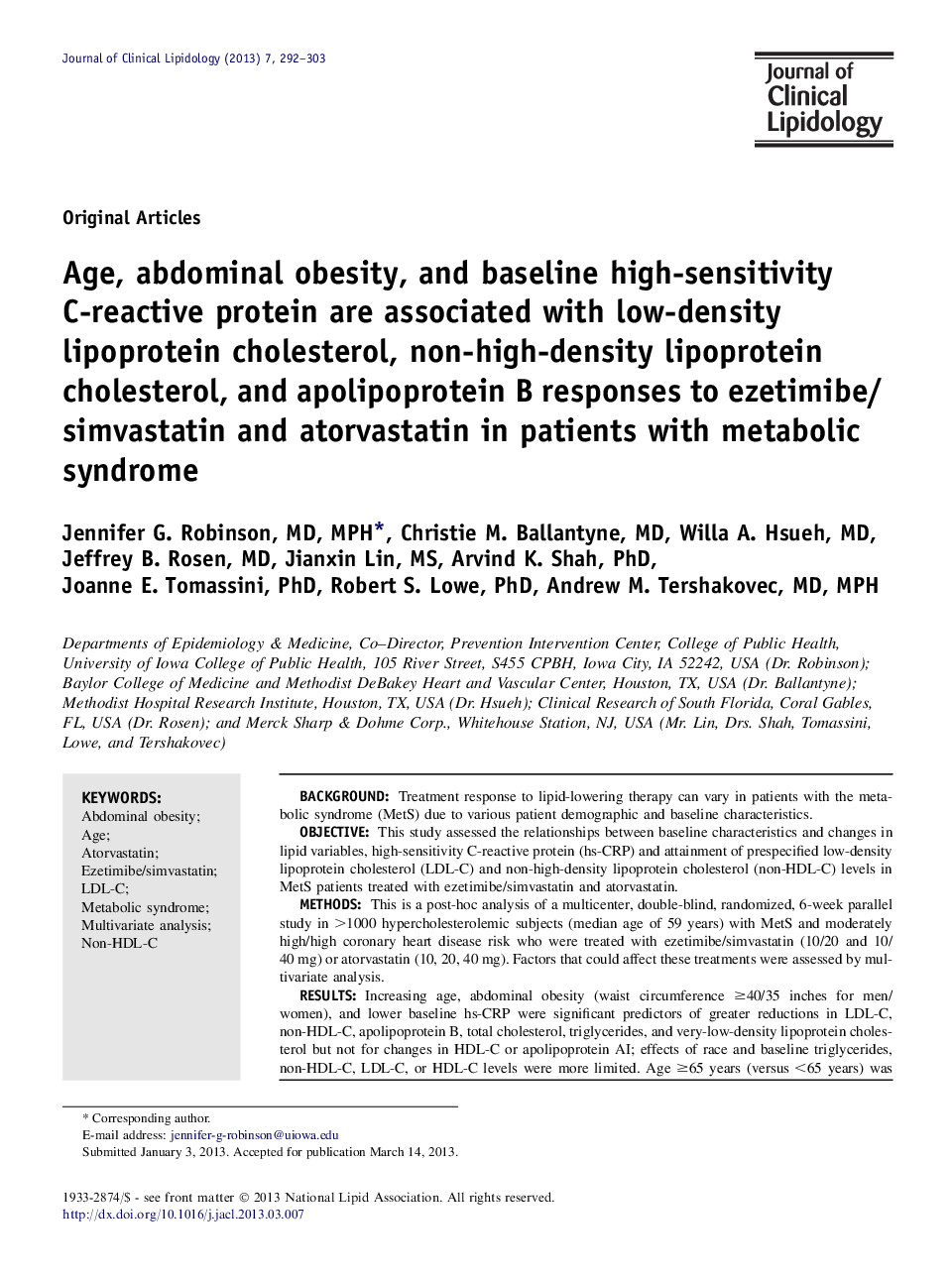| کد مقاله | کد نشریه | سال انتشار | مقاله انگلیسی | نسخه تمام متن |
|---|---|---|---|---|
| 2966362 | 1178804 | 2013 | 12 صفحه PDF | دانلود رایگان |

BackgroundTreatment response to lipid-lowering therapy can vary in patients with the metabolic syndrome (MetS) due to various patient demographic and baseline characteristics.ObjectiveThis study assessed the relationships between baseline characteristics and changes in lipid variables, high-sensitivity C-reactive protein (hs-CRP) and attainment of prespecified low-density lipoprotein cholesterol (LDL-C) and non-high-density lipoprotein cholesterol (non-HDL-C) levels in MetS patients treated with ezetimibe/simvastatin and atorvastatin.MethodsThis is a post-hoc analysis of a multicenter, double-blind, randomized, 6-week parallel study in >1000 hypercholesterolemic subjects (median age of 59 years) with MetS and moderately high/high coronary heart disease risk who were treated with ezetimibe/simvastatin (10/20 and 10/40 mg) or atorvastatin (10, 20, 40 mg). Factors that could affect these treatments were assessed by multivariate analysis.ResultsIncreasing age, abdominal obesity (waist circumference ≥40/35 inches for men/women), and lower baseline hs-CRP were significant predictors of greater reductions in LDL-C, non-HDL-C, apolipoprotein B, total cholesterol, triglycerides, and very-low-density lipoprotein cholesterol but not for changes in HDL-C or apolipoprotein AI; effects of race and baseline triglycerides, non-HDL-C, LDL-C, or HDL-C levels were more limited. Age ≥65 years (versus <65 years) was also associated with significantly greater attainment of all LDL-C and non-HDL-C targets, whereas abdominal obesity, gender (female > male) and lower baseline LDL-C, non-HDL-C, triglycerides, and hs-CRP were associated with improved attainment for some of these targets. Blood pressure, fasting glucose, Homeostasis Model Assessment of Insulin Resistance tertiles, and diabetes did not predict response for any efficacy variable. Ezetimibe/simvastatin treatment (versus atorvastatin) was a significant predictor for change in most efficacy variables.ConclusionsTreatment responses to ezetimibe/simvastatin and atorvastatin in at-risk patients with the MetS were related to age (≥65 years), abdominal obesity, and lower baseline hs-CRP. Ezetimibe/simvastatin treatment was found to be consistently more effective than atorvastatin at the specified dose comparisons across these subgroups. The clinical value of predictive factors requires further study in outcome trials.
Journal: Journal of Clinical Lipidology - Volume 7, Issue 4, July–August 2013, Pages 292–303